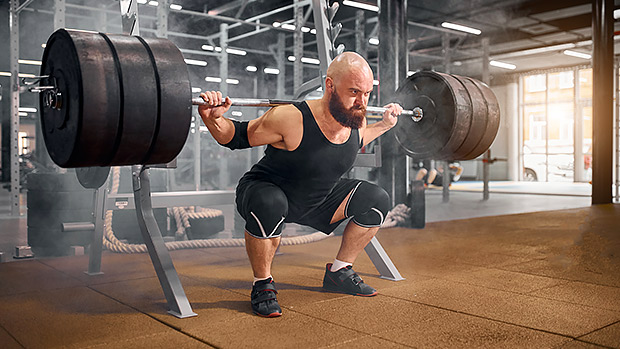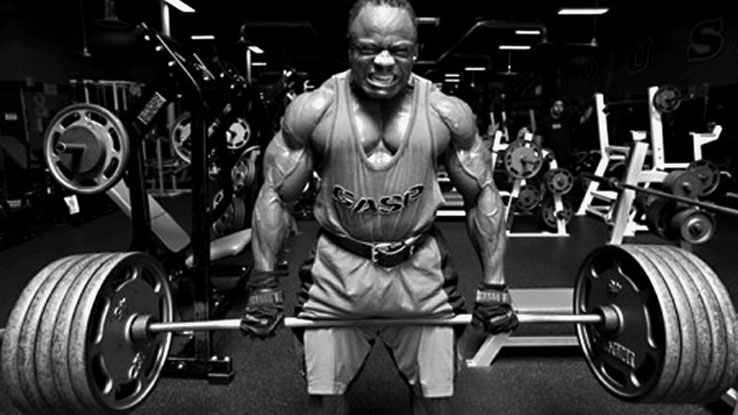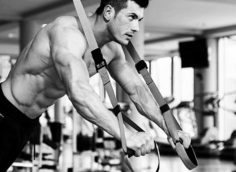One of the most common technical flaws with squats is knee caving or valgus collapse. The last thing you want to do is add plates if your squat looks like this.

Whether it's a result of overloading an inefficient squat pattern or not understanding the technical cues, valgus collapse happens a lot more than you think. Some people don't even know they're doing it. And it's one of the reasons physical therapists have thriving businesses.
It varies, but for most people this ugly knee-caving is a result of one of the following factors. I'll share some potential fixes to each issue.
Note: No corrective exercise or drill is guaranteed to fix knee caving. You may need to work with a professional if you can't fix it on your own.
Weak or inhibited muscles surrounding the knee are one of the most common causes of valgus collapse.
A weak VMO (the "tear drop" muscle) along with its weak posterior counterparts like the semimembranosus and semitendinosus (both inner aspects of the hamstrings) can cause medial shifting of the knee.
How to Fix It
Do more single-leg work. It's superior to bilateral exercises when strengthening the stabilizers surrounding the knee. Single-leg work recruits the adductor and glute medius muscles to a greater degree.
Possible exercises:
Weak hips and glutes cause internal rotation, further contributing to potential knee cave.
How to Fix It
Improve your external hip rotation and glute strength to better support the pelvis. Using a small wide band, like Mark Bell's Hip Circle, can help to promote external rotation and glute engagement. Try adding band resistance to some of the basic glute bridge patterns as part of your warm-up.
In and Out Hip Bridge
Hip Bridge With Hip Circle
One of the best ways to reinforce greater glute engagement is doing these banded exercises as part of your warm-up to strengthen the glute medius.
In and Out Foot Taps
External Rotation
Air Squat
Ankle dorsiflexion is your ability to flex your foot back (bringing your toes toward your shin). This might be your problem if you neglect ankle mobility work or overuse Olympic lifting shoes.
Restricted ankle range of motion leads to squat issues since it stops the shin from travelling forward sufficiently to achieve optimal squat depth. This will cause you to compensate by rotating your feet outward, leading to internal rotation of the tibia, causing valgus collapse.
Note: It's not a bad thing to pronate your feet for better squat depth, as long as you have the strength/mobility in the hips and stabilizers to maintain optimal knee positioning.
How to Fix It
Start with these two ankle mobility drills:
Active Banded Dorsiflexion Stretch
Banded Elevated Dorsiflexion Stretch
In addition, many lifters will wear shoes that elevate the heel to achieve better squat depth, which isn't necessarily bad. It only becomes an issue if you rely solely on heel elevation and do nothing to improve your ankle dorsiflexion. This will often lead to poor motor patterns and knee pain (or injury).
Note: Women who consistently wear heels tend to lack ankle mobility given the constant plantar-flexed position.
Sometimes just working on improving your movement pattern will reduce or eliminate knee cave altogether.
How to Fix It
Think about these cues as you squat to re-groove the pattern and maintain optimal knee positioning:
- Root your feet through the floor.
- Spread the floor apart. Imagine you're standing on a sheet of paper and you're trying to rip it apart with your feet.
- Pull yourself down to the floor with your hips. Instead of simply dropping to the floor during your squats, imagine you're trying to pull yourself down to maintain hip and glute engagement throughout the entire range of motion.
You can also use this warm-up drill to practice those cues:
Squat Rig Warm-Up





